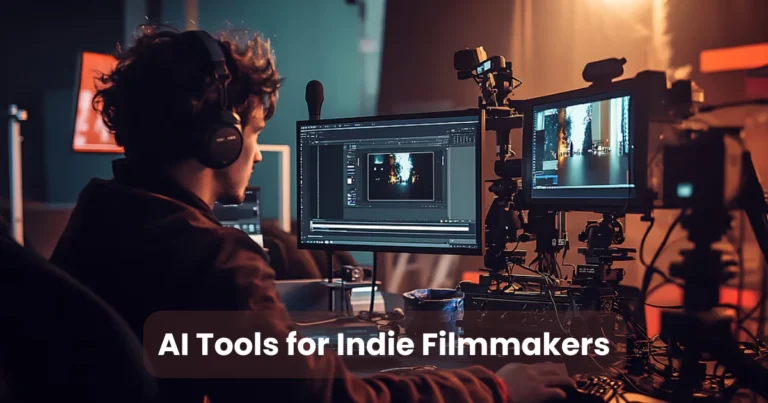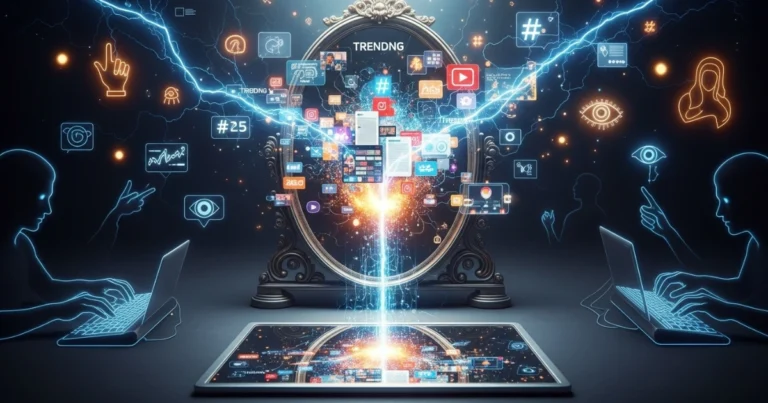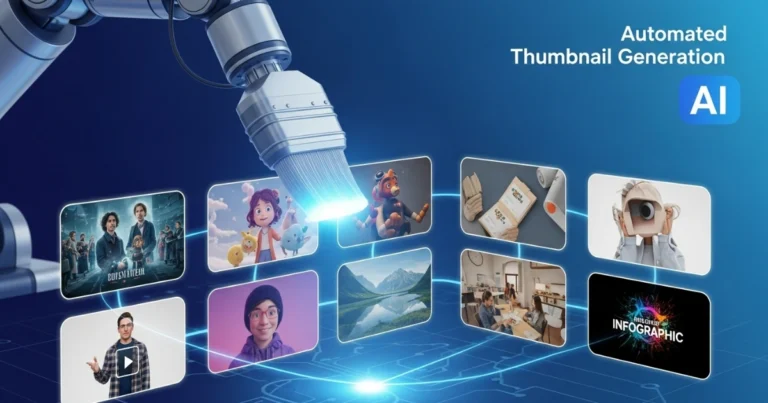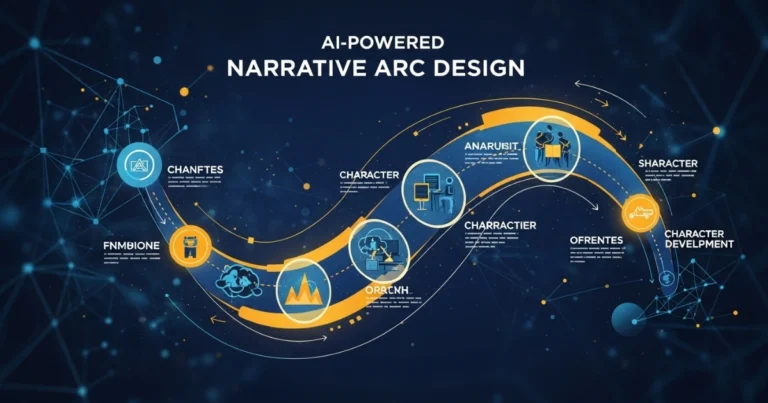Companies Using AI Art | Benefits of AI Art for Companies
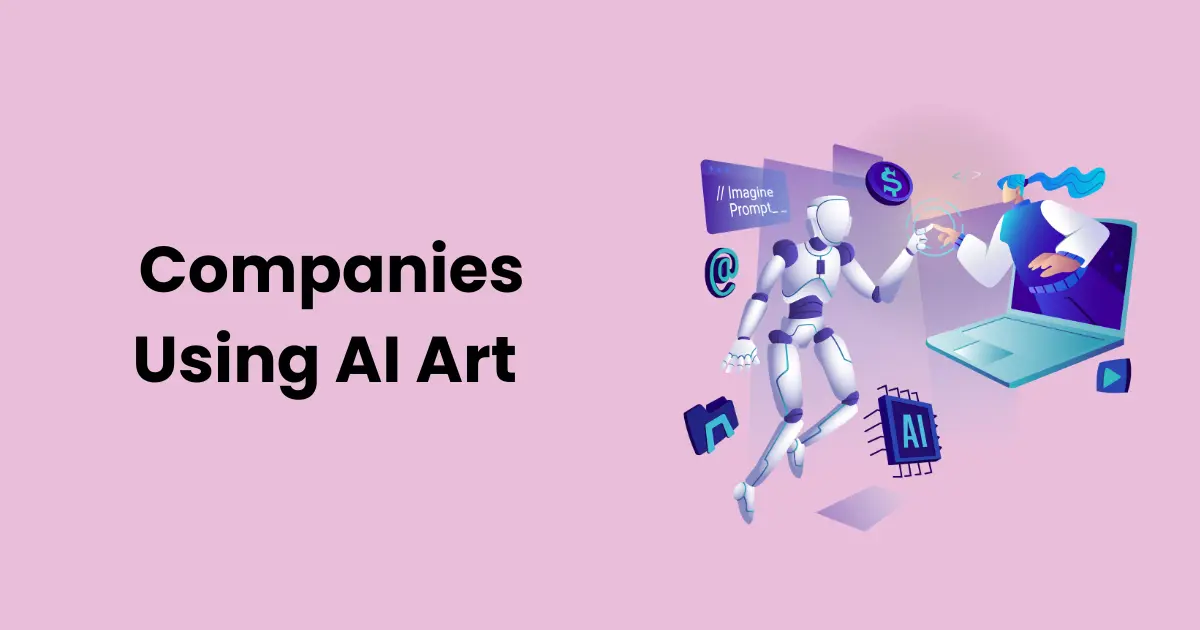
Contents
- 1 The Rise of AI Art in the Business World
- 2 How AI Art is Transforming Industries
- 3 Top Companies Using AI Art
- 4 Benefits of AI Art for Companies
- 5 Challenges Companies Face with AI Art
- 6 Future Trends in AI Art for Businesses
- 6.1 1. Hyper-Personalization of Content
- 6.2 2. Real-Time AI Art Generation
- 6.3 3. Collaborative AI Tools for Teams
- 6.4 4. AI-Driven Art Marketplaces
- 6.5 5. Ethical AI Art Practices
- 6.6 6. Integration with Emerging Technologies
- 6.7 7. Advanced Generative Models
- 6.8 8. AI-Powered Creative Assistants
- 6.9 9. Sustainable Design Solutions
- 6.10 10. Democratization of AI Art Tools
- 6.11 Conclusion
Artificial Intelligence (AI) is transforming the way we perceive and create art, giving rise to an exciting field known as AI art. By leveraging advanced algorithms, neural networks, and machine learning models, AI art has unlocked new dimensions of creativity. It enables machines to produce artwork that is not only visually stunning but also conceptually rich, often blurring the lines between human and machine-generated creativity.
Today, companies using AI art are at the forefront of this revolution, incorporating it into various industries such as marketing, entertainment, and product design. From generating unique digital paintings to automating creative processes, AI art is proving to be an invaluable asset for businesses aiming to innovate and stay competitive.
AI art’s popularity stems from its ability to produce high-quality visuals at incredible speed and scale, something that traditional methods often struggle to achieve. This revolutionary technology empowers businesses to enhance their workflows, save costs, and explore uncharted creative territories.
In this article, we explore how companies using AI art are reshaping industries and setting new standards for innovation and efficiency. From tech giants to startups, AI art is creating a new era of digital creativity that holds immense potential for the future.
The Rise of AI Art in the Business World
AI art has moved beyond novelty to become a powerful tool in the business world. With advancements in machine learning and neural networks, companies are leveraging AI art to streamline creative processes, deliver unique customer experiences, and stay ahead in competitive markets.

What is AI Art?
AI art refers to artwork generated by algorithms and artificial intelligence models. These models are trained on vast datasets of artistic styles, patterns, and elements, enabling them to create original pieces or modify existing ones. AI art spans a range of formats, including digital paintings, animations, 3D models, and interactive designs.
How AI Art is Transforming Industries
Businesses across various sectors are adopting AI art for its ability to enhance creativity while saving time and costs. Here are some ways AI art is making a difference:
- Marketing and Advertising: Companies use AI-generated visuals to create tailored campaigns that resonate with target audiences. AI art enables rapid prototyping and high-volume content creation, perfect for dynamic advertising needs.
- Entertainment: AI-generated animations and character designs have revolutionized video production and gaming, offering detailed and immersive experiences.
- E-Commerce: AI art allows businesses to design personalized product visuals, enhancing customer engagement and boosting sales.
- Fashion and Design: Fashion brands are utilizing AI to conceptualize new trends, generate digital fittings, and create one-of-a-kind designs.
Why Companies are Embracing AI Art
The adoption of AI art by companies is driven by several factors:
- Cost Efficiency: Reduces reliance on traditional art production, lowering operational costs.
- Speed and Scalability: Delivers high-quality creative assets at an unmatched pace.
- Versatility: AI tools can produce a wide range of art styles and formats, meeting diverse business needs.
- Innovation: Provides unique creative outputs that may not be achievable by human artists alone.
Real-World Adoption of AI Art
From global corporations to agile startups, companies using AI art are applying it in impactful ways. Tech giants like Google and Microsoft have incorporated AI art into their creative tools, while startups such as Runway and Artbreeder are offering specialized platforms that empower users to explore AI-driven creativity.
As industries continue to evolve, AI art is set to become a cornerstone of innovation. By embracing this technology, businesses are not only enhancing their creative capabilities but also paving the way for a future where AI and human creativity coexist to produce extraordinary results.
Top Companies Using AI Art
As the demand for innovation grows, several businesses have embraced AI art to enhance their creative capabilities. These companies using AI art span diverse industries, from technology giants to dynamic startups, all leveraging the power of artificial intelligence to revolutionize their processes.

Tech Giants Leveraging AI Art
- Google
Google has been at the forefront of AI art through initiatives like DeepDream and Magenta. These tools enable users to create surreal, dream-like images or music by tapping into AI’s creative potential. Google’s AI experiments continue to inspire new ways of blending technology and art. - Microsoft
Microsoft integrates AI art into its platforms like Microsoft Designer and PowerPoint Designer. These tools empower users to generate visually appealing presentations, graphics, and content quickly, boosting productivity and creativity. - Adobe
Adobe’s Sensei AI powers tools in Adobe Creative Cloud, such as Photoshop and Illustrator, with features like content-aware fill, automatic background removal, and generative art suggestions, making design more accessible and efficient.
Creative Studios and Agencies Adopting AI Art
- Runway
Runway is a pioneer in AI-powered video editing and art creation. Its platform allows users to edit videos, generate animations, and experiment with visual storytelling using AI tools. - OpenAI (DALL·E)
DALL·E, developed by OpenAI, has become a household name in the AI art community. This tool generates high-quality images from textual descriptions, allowing creators to bring their ideas to life effortlessly. - DeepArt.io
DeepArt.io uses deep learning algorithms to transform photos into art pieces inspired by famous artistic styles, bridging the gap between traditional art and modern technology.
Startups Revolutionizing AI Art Applications
- Artbreeder
Artbreeder enables users to create and modify digital art using AI-driven sliders that adjust traits like style, color, and form. This user-friendly platform has gained popularity among artists and designers. - NightCafe
NightCafe specializes in creating AI-generated art for personal and commercial use. Its intuitive platform allows users to experiment with various styles and generate high-quality visuals. - Runway ML
This startup focuses on machine learning tools for creatives, offering AI-powered solutions for video editing, music generation, and visual art.
Other Notable Companies Using AI Art
- NVIDIA: Known for its AI-generated landscapes, NVIDIA uses GANs (Generative Adversarial Networks) to create hyper-realistic visuals for gaming and virtual environments.
- Etsy Sellers: Many small businesses on platforms like Etsy have adopted AI art tools to produce unique, customizable products like prints, stickers, and apparel.
Why These Companies Stand Out
What sets these companies apart is their ability to integrate AI art into their business models effectively. By combining cutting-edge technology with creative innovation, they cater to a wide range of industries and user needs, pushing the boundaries of what AI art can achieve.
As the capabilities of AI art continue to evolve, these companies using AI art are leading the charge in transforming how art is created, shared, and monetized in the digital age.
Benefits of AI Art for Companies
AI art is revolutionizing how businesses approach creativity and production. By integrating artificial intelligence into their workflows, companies using AI art can unlock unparalleled advantages that enhance efficiency, scalability, and innovation. Below are some of the key benefits of adopting AI art for businesses.

1. Cost Efficiency
One of the most significant benefits of AI art is its ability to reduce costs. Traditional artistic creation often requires significant investments in human talent, time, and resources. AI art tools can automate repetitive tasks and generate high-quality visuals without the need for large teams or extended timelines.
- Example: Marketing agencies use AI art to create ad visuals in minutes, saving costs on professional designers and production teams.
2. Speed and Scalability
AI art tools operate at a pace that humans cannot match. They can generate multiple iterations of a design, customize visuals for different platforms, and produce bulk content quickly. This scalability is particularly beneficial for industries like advertising and e-commerce, where speed is critical.
- Example: E-commerce companies use AI art to design thousands of product mockups tailored to diverse customer preferences.
3. Unprecedented Creativity
AI art expands the boundaries of creativity by introducing designs and concepts that may not occur to human artists. AI algorithms can analyze vast datasets of artistic styles and combine them in novel ways, resulting in unique outputs.
- Example: Fashion brands use AI to conceptualize bold, avant-garde designs that blend diverse cultural influences.
4. Customization and Personalization
AI art enables businesses to create highly personalized content, making marketing campaigns more engaging and customer-centric. By analyzing consumer data, AI can generate visuals that align with individual preferences and needs.
- Example: AI-driven ad platforms produce personalized ads based on user behavior, boosting click-through rates and conversions.
5. Accessibility
AI art democratizes creativity, making high-quality design tools accessible to businesses of all sizes. Even startups and small businesses can now produce professional-grade visuals without needing large budgets or expert design teams.
- Example: Freelancers and small businesses use platforms like Canva or Runway, powered by AI art, to produce compelling designs effortlessly.
6. Consistency in Branding
AI art ensures that businesses can maintain consistent branding across all touchpoints. By automating the creation of branded visuals, companies can reduce errors and maintain a cohesive identity.
- Example: Brands use AI to automatically generate marketing materials that align with their color schemes, typography, and logo designs.
7. Enhanced User Experience
AI art plays a vital role in creating immersive and engaging user experiences, especially in industries like gaming, entertainment, and virtual reality. AI-generated environments, characters, and assets make products more appealing.
- Example: Gaming companies use AI art to design hyper-realistic worlds that captivate players and improve engagement.
8. Eco-Friendly Solutions
By streamlining production processes and reducing waste, AI art can contribute to more sustainable practices. Companies can minimize physical resources like paper, paints, and other materials by working entirely in digital formats.
- Example: Design studios use AI-generated prototypes instead of physical models, reducing environmental impact.
The benefits of AI art are driving its adoption across industries, from marketing to gaming and beyond. By leveraging the power of AI, businesses can achieve cost savings, scalability, and unmatched creative potential. As more companies using AI art embrace this transformative technology, it’s clear that AI art is not just a trend but a cornerstone of future innovation.
Challenges Companies Face with AI Art
While AI art offers numerous benefits, it also presents challenges that businesses must navigate to fully integrate this technology into their workflows. For companies using AI art, addressing these challenges is crucial to maximizing its potential and avoiding pitfalls. Below are some of the primary challenges faced by businesses leveraging AI art.

1. Ethical Concerns
AI art raises significant ethical questions, particularly regarding copyright and originality. Since AI models are trained on vast datasets, often without explicit permission from original creators, concerns about intellectual property infringement and fair use arise.
- Example: Artists and photographers have accused some AI art tools of replicating their styles without credit or compensation, sparking legal debates.
2. Lack of Human Touch
While AI can generate impressive visuals, it often lacks the emotional depth and storytelling ability that human artists bring to their work. This limitation can result in art that feels generic or fails to connect with audiences on a personal level.
- Example: Marketing campaigns relying solely on AI-generated visuals may struggle to evoke strong emotional responses from viewers.
3. Dependence on High-Quality Data
AI art tools require extensive and high-quality datasets to perform effectively. Poorly curated or biased datasets can lead to subpar outputs, such as repetitive designs or unintended stereotypes.
- Example: An AI model trained on limited data may fail to produce diverse art styles, restricting creative possibilities for companies.
4. Technical Complexity
Implementing AI art systems can be technically challenging for companies without expertise in artificial intelligence or machine learning. The need for skilled personnel to manage and optimize these tools adds to the complexity.
- Example: Small businesses often lack the resources to hire AI specialists, making it difficult to adopt AI art technologies effectively.
5. High Initial Costs
The adoption of AI art tools often involves significant upfront investment in software, hardware, and training. For startups and smaller companies, these costs can be a barrier to entry.
- Example: Companies need to purchase advanced AI tools or cloud-based platforms like DALL·E or Runway, which may have subscription fees or high licensing costs.
6. Legal and Regulatory Issues
The legal landscape surrounding AI art is still evolving. Businesses face uncertainties regarding the ownership of AI-generated content, as intellectual property laws often fail to address AI-related creations comprehensively.
- Example: Companies using AI art risk disputes over whether the creator of the AI model, the user, or the company owns the final output.
7. Over-Reliance on Automation
While AI can streamline creative processes, over-reliance on automation may stifle human creativity and innovation within teams. Balancing AI’s capabilities with human input is crucial to maintaining originality and diversity in creative outputs.
- Example: A design team that relies entirely on AI-generated content may lose the ability to brainstorm unique ideas.
8. Public Perception and Trust
Consumers and stakeholders may view AI art as less authentic or inferior to human-created art. This perception can affect brand reputation, particularly in industries like fine art, where authenticity is highly valued.
- Example: An art gallery selling AI-generated works may face backlash from patrons who value traditional artistic craftsmanship.
9. Continuous Maintenance and Updates
AI models require ongoing maintenance to stay relevant and effective. Regular updates, retraining on new datasets, and fine-tuning are necessary to ensure high-quality outputs.
- Example: Companies using outdated AI art tools may produce visuals that appear obsolete or fail to meet current design trends.
For companies using AI art, these challenges underscore the need for thoughtful implementation and ethical practices. By addressing issues like data quality, legal compliance, and public perception, businesses can harness the full potential of AI art while mitigating its risks. Successfully navigating these challenges requires a balance between technology and human creativity, ensuring that AI art serves as a complement rather than a replacement in the creative process.
Future Trends in AI Art for Businesses
The evolution of AI art is transforming the way businesses approach creativity, and the future promises even greater innovations. As technology advances, companies using AI art will have access to new tools and techniques that reshape industries and redefine the boundaries of creativity. Below are some of the key trends shaping the future of AI art in business.

1. Hyper-Personalization of Content
AI art will enable businesses to deliver hyper-personalized content tailored to individual customer preferences. By analyzing user behavior and preferences, companies can create unique designs, advertisements, and visual experiences for every customer.
- Example: AI-powered e-commerce platforms generating custom product visuals based on individual browsing history and aesthetic preferences.
2. Real-Time AI Art Generation
The integration of AI art with augmented reality (AR) and virtual reality (VR) technologies will allow businesses to generate art in real time. This capability will enhance industries such as gaming, live events, and digital marketing.
- Example: AR-powered applications that let users customize digital murals or designs in real-time during live events.
3. Collaborative AI Tools for Teams
Future AI art tools will focus on collaboration, allowing multiple team members to contribute to a project simultaneously. These platforms will combine human creativity with AI capabilities to streamline workflows.
- Example: Creative agencies using collaborative AI platforms to design marketing campaigns where team members can provide real-time feedback and suggestions.
4. AI-Driven Art Marketplaces
AI art is expected to drive the growth of specialized marketplaces for buying, selling, and licensing AI-generated works. These platforms will provide opportunities for businesses to access a wide variety of creative assets quickly.
- Example: Marketplaces offering AI-generated logos, illustrations, and animations tailored for businesses of all sizes.
5. Ethical AI Art Practices
With growing concerns about copyright and authenticity, the future of AI art will likely include tools that ensure ethical practices. Transparent AI algorithms and proper attribution mechanisms will be critical in addressing legal and ethical issues.
- Example: AI tools that include built-in features to credit original datasets or verify copyright compliance.
6. Integration with Emerging Technologies
AI art will integrate seamlessly with other technologies like blockchain, allowing for the creation of verifiable digital art pieces. Businesses will use this to establish trust and provenance for their AI-generated works.
- Example: Companies creating blockchain-certified AI art pieces to ensure authenticity and ownership.
7. Advanced Generative Models
Generative AI models will continue to improve, producing more realistic, complex, and versatile art. These advancements will expand the applications of AI art in industries such as film, fashion, and architecture.
- Example: AI models generating lifelike 3D visualizations for architectural designs or realistic costumes for the entertainment industry.
8. AI-Powered Creative Assistants
AI tools will evolve into creative assistants that work alongside human designers, suggesting improvements, providing inspiration, and automating repetitive tasks.
- Example: A graphic designer using an AI assistant to explore variations of a design concept and choose the most impactful version.
9. Sustainable Design Solutions
AI art will contribute to more sustainable business practices by reducing the need for physical resources. Digital prototypes and AI-generated visuals will minimize waste and lower the environmental impact of creative projects.
- Example: Fashion brands using AI art to design virtual collections, reducing the need for fabric samples and physical production.
10. Democratization of AI Art Tools
As AI technology becomes more affordable and accessible, small businesses and individual creators will gain access to powerful art generation tools. This democratization will level the playing field in creative industries.
- Example: Startups using AI tools like Canva’s AI-powered design features to compete with larger enterprises in producing high-quality marketing materials.
The future of AI art is brimming with possibilities, offering businesses innovative ways to enhance creativity, improve efficiency, and engage customers. These trends will enable companies using AI art to remain competitive in an increasingly digital and visual world. By staying ahead of these developments, businesses can unlock the full potential of AI art and redefine the way they connect with audiences.
Conclusion
The rise of AI art is transforming the creative and business landscapes, offering opportunities for innovation, efficiency, and engagement. Companies using AI art are at the forefront of this shift, utilizing advanced tools to revolutionize marketing, entertainment, design, and more. From creating hyper-personalized content to automating repetitive tasks, AI art empowers businesses to achieve more with less effort.
However, this technology also comes with challenges, such as ethical concerns, copyright disputes, and the need for technical expertise. Addressing these hurdles will be crucial for companies to harness the full potential of AI art responsibly and effectively.
As the future unfolds, advancements in AI models, blockchain integration, and collaborative tools will further redefine how businesses use AI art. Companies that adapt to these changes and embrace innovation will not only lead the AI art revolution but also set new benchmarks for creativity and success in the digital era.

